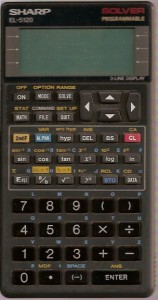A Brief History of the Calculator
 Even before numbers themselves were invented, people needed a way to keep track of the cost of goods they were selling. To fulfil this need, in ninth century China the abacus was invented- a basic calculating device made out of a wooden frame and counting beads.
Even before numbers themselves were invented, people needed a way to keep track of the cost of goods they were selling. To fulfil this need, in ninth century China the abacus was invented- a basic calculating device made out of a wooden frame and counting beads.
Despite the importance of being able to calculate numbers accurately, it wasn’t until 1642 that the French inventor Blaise Pascal developed the Pascaline, an adding and subtracting machine. And it was another 350 years before the calculator began to resemble the machines we recognise today.
After such a slow start, the relatively brief period from the nineteenth century to the present day has seen the calculator progress and develop dramatically through a vast number of advancements and changes.
The first commercially successful adding machine was developed in 1886 by William Seward Burroughs of Rochester in the United States (1855-1898). Then came the “Millionaire,” a calculator invented by Otto Steiger in 1894. This was the first adding machine capable of direct multiplication as well as adding and taking away numbers. These machines were, however, both big, bulky, and very expensive.
It was not until the early 1900’s that calculators began to get smaller in size, with the easy to use layout of two rows of five buttons arriving in 1901. In 1911 the ten digit layout which we’re familiar with today was incorporated into the design of the scientific calculator. It would take until 1966 for the hand-held pocket calculator to be invented, though, at the Texas Instruments factory by Jerry D. Merryman, James H. Van Tassel and Jack St. Clair Kilby in the USA.
Since the 1990’s there has been a mass explosion of calculating devices hitting the market; from children’s basic models in bright colours, to extremely complex scientific calculators, to calculators on computers and mobile phones. And like everything else, the calculator will continue to change and evolve to remain as useful as it has ever been.
